Air quality monitoring stations across Trinidad and Tobago are detecting a major surge of Saharan Dust moving in from the east as forecast. Air quality is quickly dropping across Tobago and eastern areas of Trinidad as dust concentrations increase. By nightfall, air quality is forecast to be unhealthy for sensitive groups to unhealthy across the country. All sensitive groups should take all necessary precautions.
What you need to know
— Saharan Dust Surges: A significant surge of Saharan Dust is forecast to move across Trinidad and Tobago, the Windwards, and Leewards this afternoon through tonight. High Saharan Dust concentrations are forecast to remain present through April 26th, with a secondary peak in concentrations on April 23rd.
— Impacts: From Saturday through next week, air quality is forecast to range from moderate to unhealthy, with a further localized reduction in air quality levels near fires through the forecast period
— What Should You Do: In times of unhealthy air quality, everyone should take the necessary precautions. Throughout the forecast period, sensitive groups are advised to take the necessary precautions, particularly during high traffic and in the vicinity of fires.
Current AQI Levels Across T&T

The official air quality monitoring stations from the Environmental Management Agency (EMA) at Point Lisas, Mayaro, Toco, Beetham, Arima, and San Fernando are all reporting moderate levels, while at Scarborough, air quality levels are unhealthy for sensitive groups.
Both Scarborough and Toco stations have detected a sharp increase in PM2.5 and PM10 particulates over the last few hours.
Scarborough

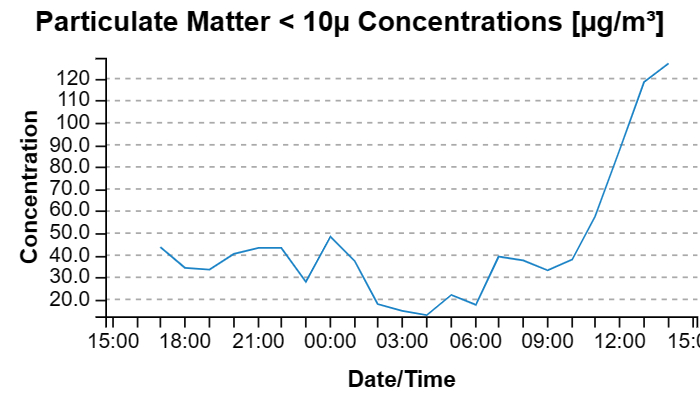
Toco


Unofficial air quality monitoring stations at Longdenville, St. Augustine, and Woodbrook are reporting moderate to good air quality.
These measurements are based on PM2.5 (particulates the size of 2.5 micrometers and smaller, usually associated with increases in Saharan Dust, vehicle exhaust, and smoke) and PM10 particulates.
Over the last 24 hours, visibility has remained at 10 kilometers at the A.N.R. Robinson International Airport at Crown Point, Tobago, while at the Piarco International Airport, Trinidad, visibility has fluctuated between 8 and 10 kilometers outside of shower activity.
Saharan Dust Forecast

Saturday (Apr. 20th) through Thursday (Apr 25th): A major Saharan Dust surge is forecast to affect Trinidad and Tobago, greatly affecting air quality and visibility. Unhealthy air quality is likely from midday Saturday through late Sunday and again Tuesday through Thursday, with further reductions possible in the vicinity of fires and blowing dust. Visibility is forecast to reduce as low as four kilometers, but lower visibility is possible near dawn and dusk. Everyone should take all precautions during this period.
Improvement is forecast across Trinidad and Tobago from April 27th, with mild to moderate Saharan Dust concentrations expected to be present. By April 29th, little to no Saharan Dust is forecast to be present across T&T and the Lesser Antilles.
What does this mean for you?
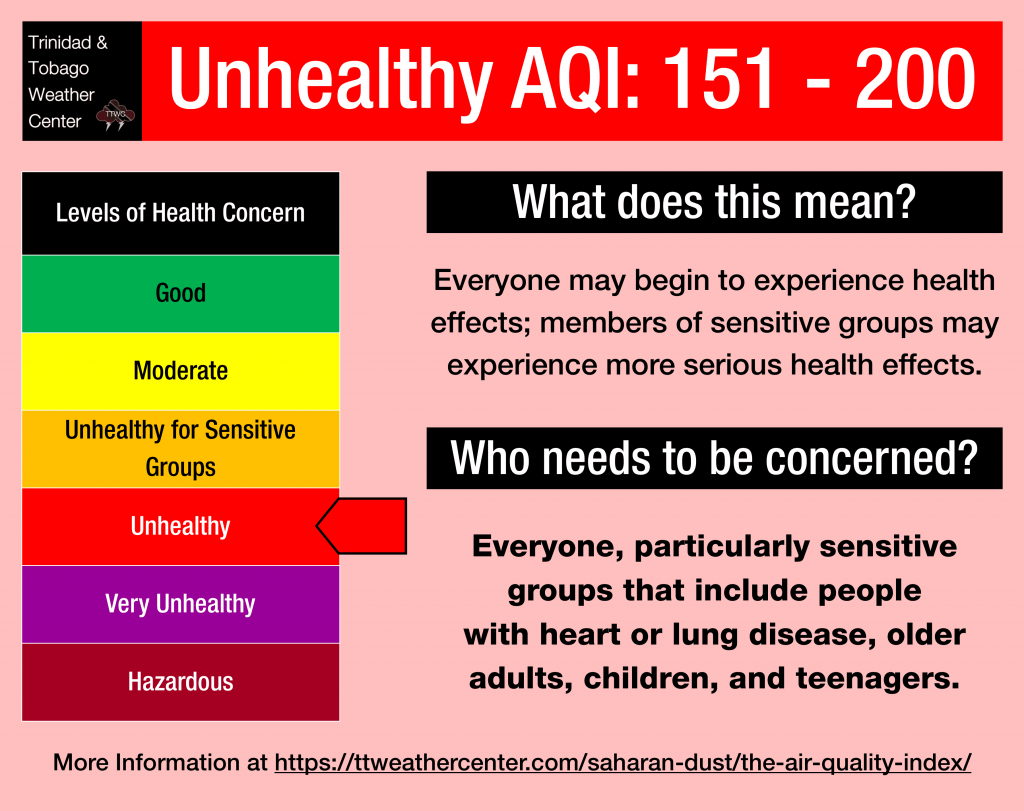
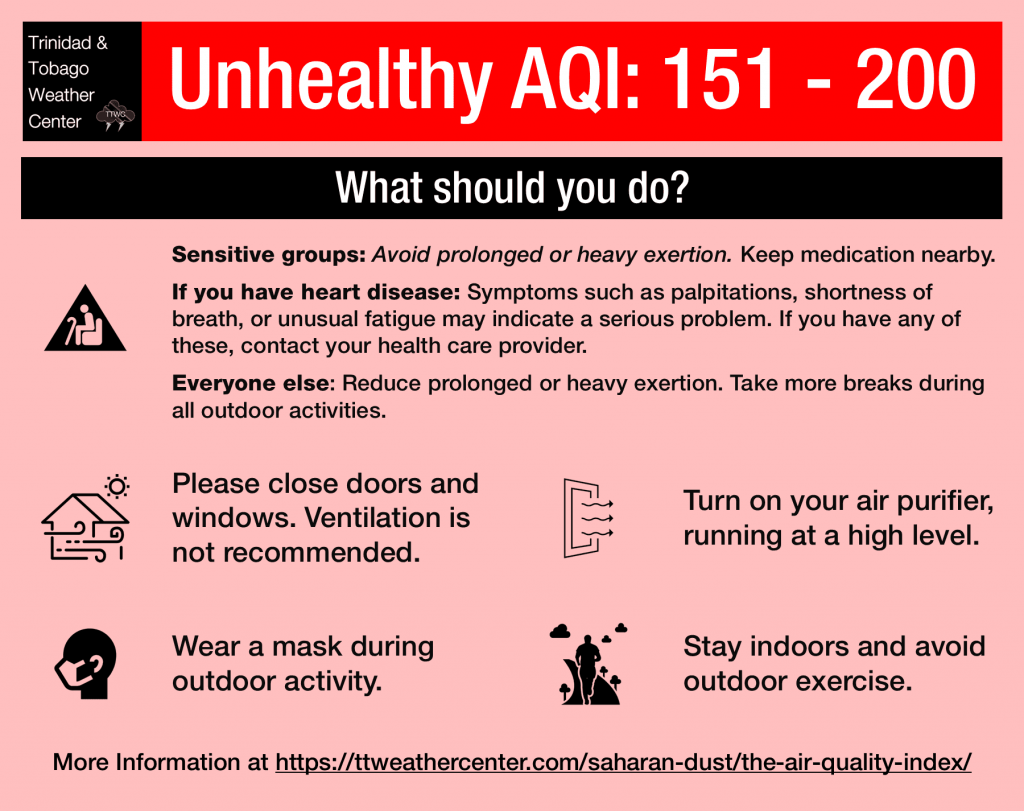
Unhealthy air quality is forecast this weekend and through mid-next week in areas where blowing smoke occurs or near fires. Everyone may begin to experience health effects, and members of sensitive groups may experience more serious health effects.
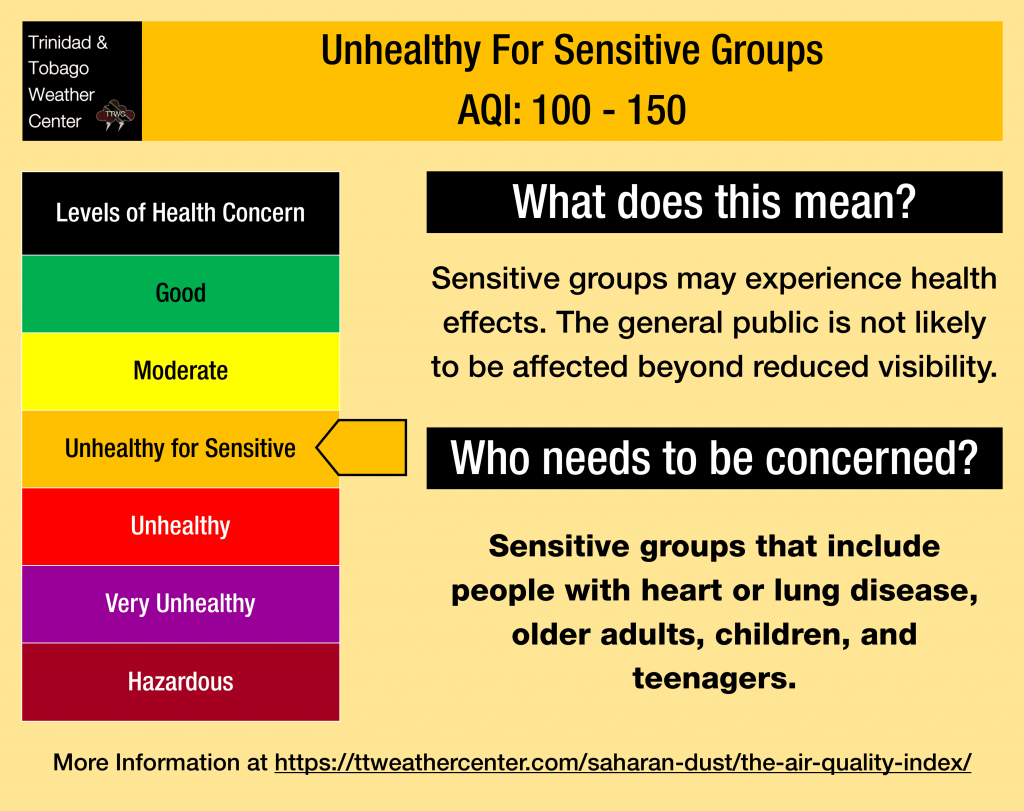

Mainly from April 17th, air quality is forecast to reach generally moderate to unhealthy for sensitive groups. With elevated concentrations present and drier and breezier conditions bringing the risk of fires, air quality is still forecast to be reduced, with further reductions in localized areas of fires, blowing smoke and dust, and high traffic.
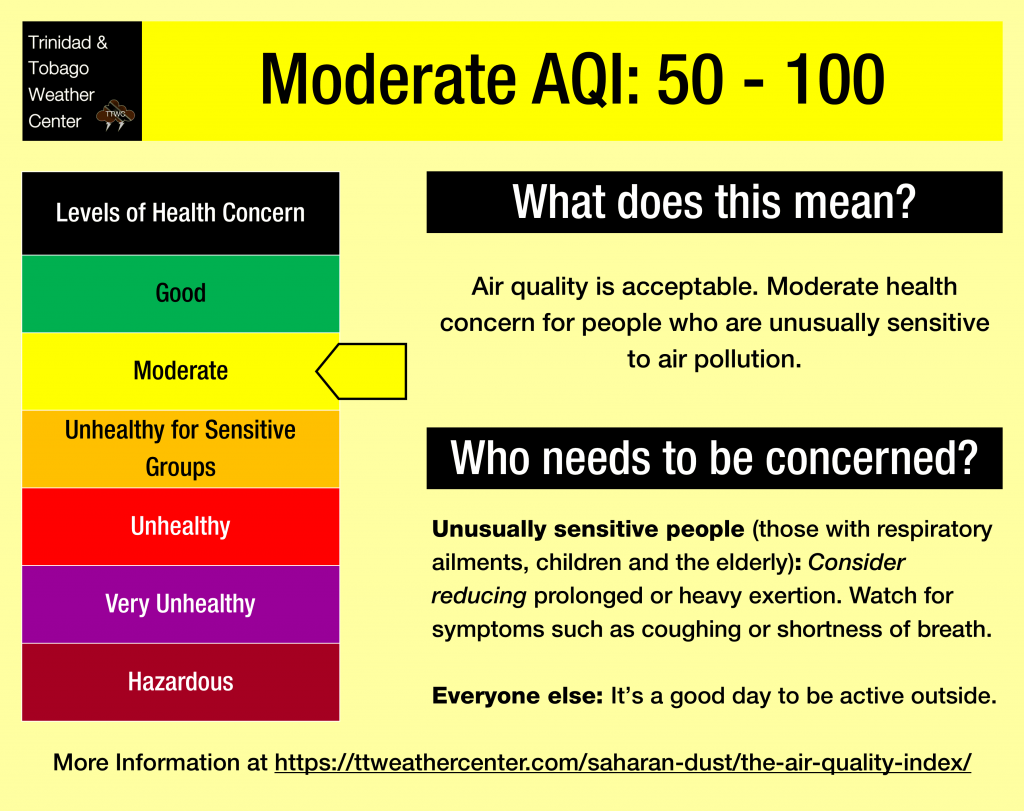
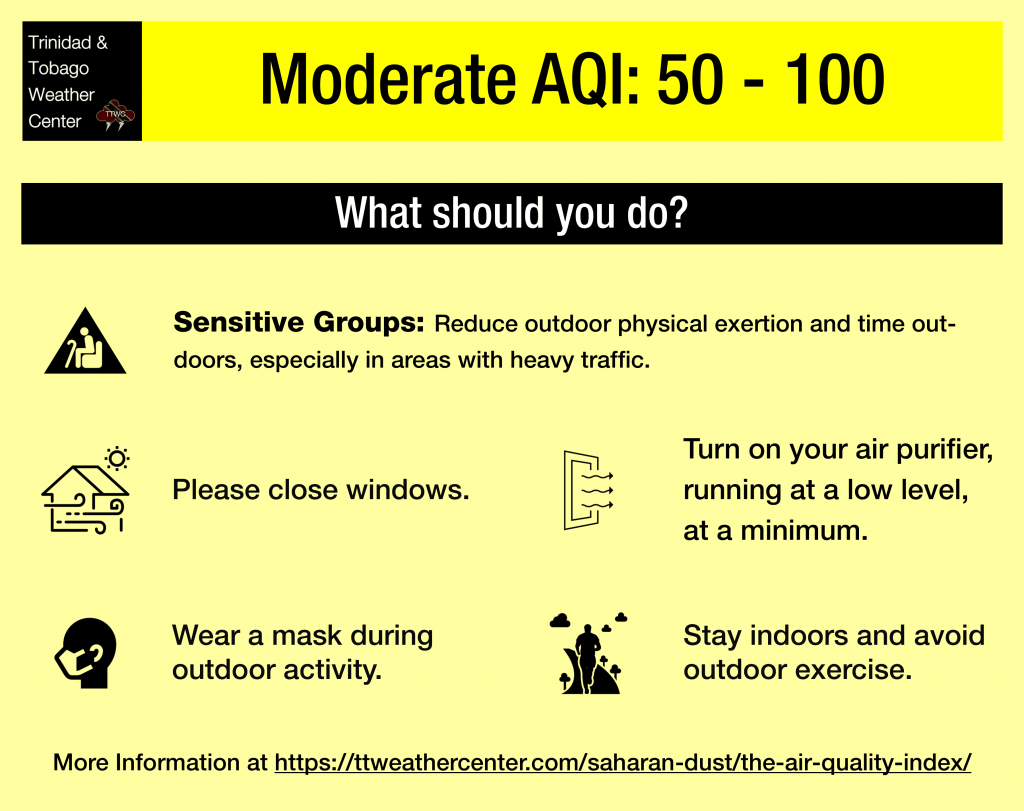
During this period, a ridge of high pressure stays over the central Sahara Desert, and the Intertropical Convergence Zone (ITCZ) remains over the Gulf of Guinea. The Harmattan wind accelerates when it blows across the mountain massifs of Northwest Africa. If its speed is high enough and it blows over dust source regions, it lifts the dust and disperses it.
The surges of dust during this time of year are due to the Harmattan, a season in the West African subcontinent that occurs between the end of November and the middle of March. During this season, a predominant northeasterly trade wind (dubbed the Harmattan Winds) blows from the Sahara Desert over Western Africa into the Gulf of Guinea.
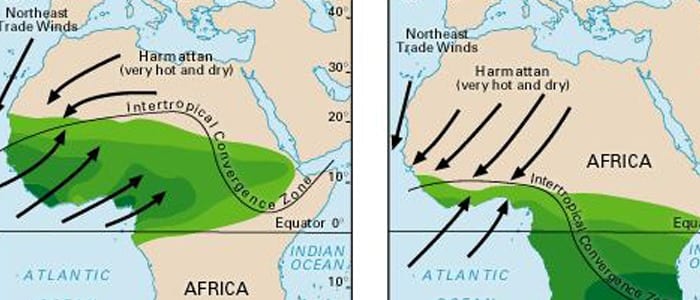
Dust that makes it into the upper levels of the atmosphere can then get transported across the Atlantic Ocean and affect the Eastern Caribbean. These Saharan Dust outbreaks tend to be milder in the Eastern Caribbean than the dust outbreaks.











